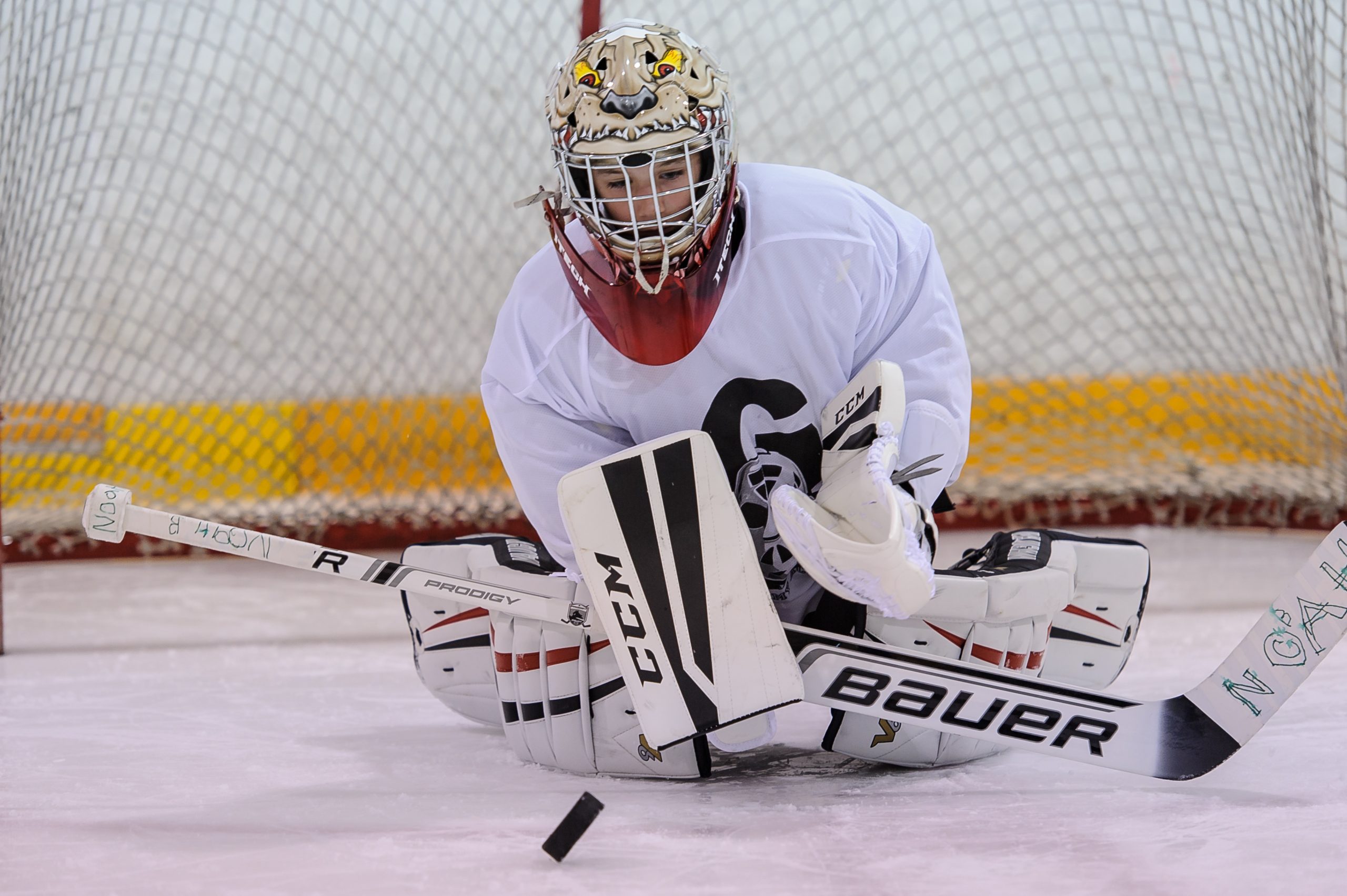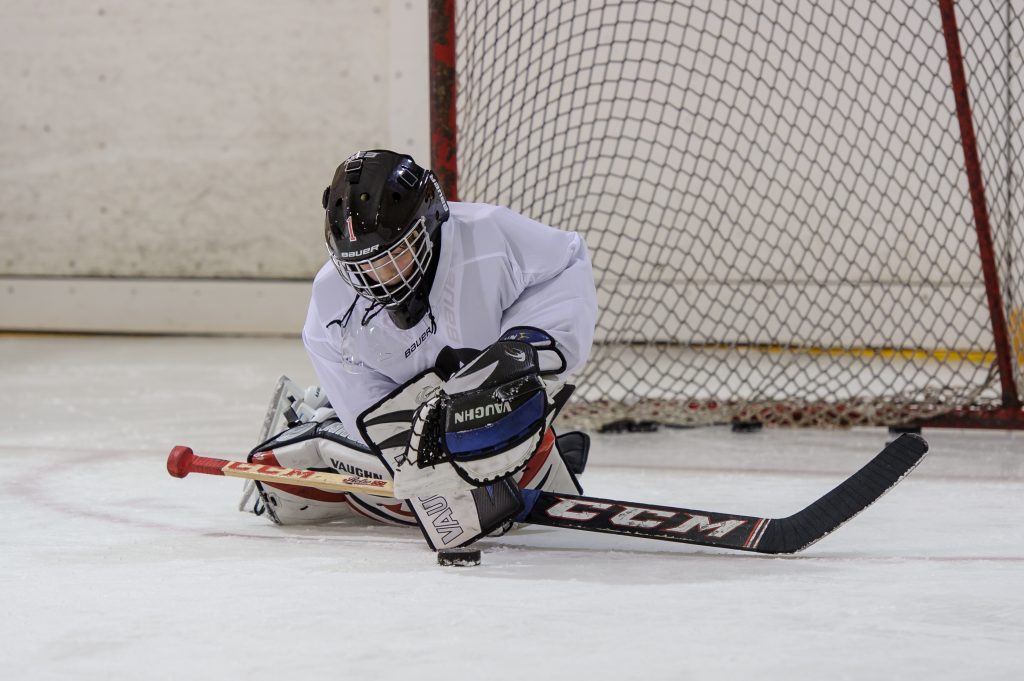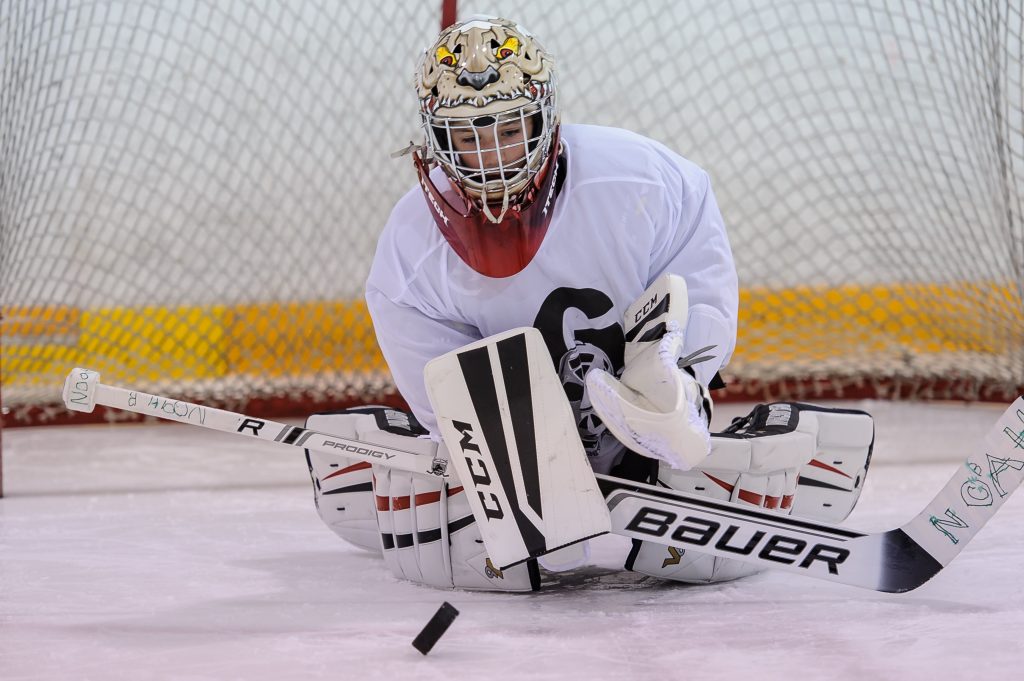
Stopping Dump-Ins (Paddle Down)
Recently, I had a discussion with a student’s parent after one of our goalie training sessions about using the paddle of the stick in order to stop and control dump-ins. It appeared as though the student’s goaltending partner was having plenty of success by applying this method, so the parent asked whether it should be something that their son should be doing as well.
 There are pros and cons with this method. So I felt it would be beneficial to break them down further so that goalies, coaches and parents may understand how and when to use this technique to their advantage, and so that the messages we relay to our students during goalie training sessions remain consistent with team coaches and parents. For the sake of this article, I will use a Novice/Atom goaltender as my example.
There are pros and cons with this method. So I felt it would be beneficial to break them down further so that goalies, coaches and parents may understand how and when to use this technique to their advantage, and so that the messages we relay to our students during goalie training sessions remain consistent with team coaches and parents. For the sake of this article, I will use a Novice/Atom goaltender as my example.
In a nutshell, I’m a firm believer that teaching young goalies to drop the paddle only causes a chain reaction of poor habits which begin to trickle into zone play. However, the goalie needs to avoid a dump-in from turning into a goal against as well. Therefore, I feel it’s best to ensure that goaltenders learn both methods to determine what’s best for them. But before getting ahead of ourselves, let’s take a look at a few essential areas first.
Stick Grip
There’s no shortage of goalies who we meet for the first time at our goalie training sessions who don’t know how to hold a goalie stick properly. So before we even get on the topic of stopping a dump-in, it’s essential to understand how to hold the goalie stick and to use the blade of the goalie stick successfully.
Holding the stick properly adds an element of control to pucks stopped by the stick’s blade. But goaltenders need to watch the puck all the way to the stick while understanding how a butterfly drop may affect the positioning of the blade of the stick as well.
Understanding the Butterfly Drop
A common technical issue at this age is that when dropping to a butterfly, goalies that hold their stick too close to their pads while in their ready stance may enable their pads to come into contact with the backside of their stick’s paddle. This causes the blade of their stick to lift off of the ice. When holding the stick close to the pads, something to be mindful of is the quicker the drop – the higher the pop. Meaning, reading the path of the puck and easing into a butterfly drop may enable a goaltender to control the blade of their stick more.
Development vs Avoiding A Goal
 A con with teaching students at early stages to drop the paddle to control the puck on a dump-in, is that it solves an immediate need for controlling the puck when on a macro level, it falls short. Instead, we should be helping children to develop their ability to control the puck with the blade of their stick right from the start.
A con with teaching students at early stages to drop the paddle to control the puck on a dump-in, is that it solves an immediate need for controlling the puck when on a macro level, it falls short. Instead, we should be helping children to develop their ability to control the puck with the blade of their stick right from the start.
Dropping the paddle for pucks which are dumped-in toward the net will enable the goaltender to stop the puck easily. However, it does not enable the goaltender to get a feel for the puck on the blade of their stick. Developing areas of the goaltender’s game such as controlling pucks to corners, ramping the puck into the body for quick absorption, or eventually (once the force behind shots along the ice increases) directing the puck over the glass to force a stoppage when your team needs it are essential areas of the goaltender’s game and during goalie training sessions. However, by teaching goalies to drop the paddle to “play it safe”, coaches and parents are hindering future puck control development.
Safety First
An often overlooked area, promoting safety and protecting one’s self against scoring and physical threats is always part of what we do at our goalie training sessions.
Once goalies have stopped and controlled the puck, they will need to pass it, place it for their teammates, or opt to freeze the puck. Using the example of placing the paddle down to stop and control the puck when faced with a dump-in, playing the puck or placing the puck with accuracy becomes even more difficult because of the need to straighten up before being able to use the blade of their stick.
In addition, goalies which stop pucks with their paddle, then place the glove on top of the puck will leave themselves open for injury from opposing player’s sticks or skates. Whereas utilizing the paddle of the stick to protect the puck and the glove will enable goaltenders to minimize the risk of injury and the puck breaking loose from under them.
As you can see, there’s more to stopping a dump-in than simply stopping the puck. We promote control and building awareness when watching the puck all the way to the blade of the stick at our goalie training sessions thus building long term development and awareness of protecting the puck, and one’s self against opposing threats.
Please be mindful that there is no right or wrong way of stopping a puck. But there are always elements to improve upon in order to promote on-ice efficiency.


Leave a Reply